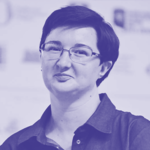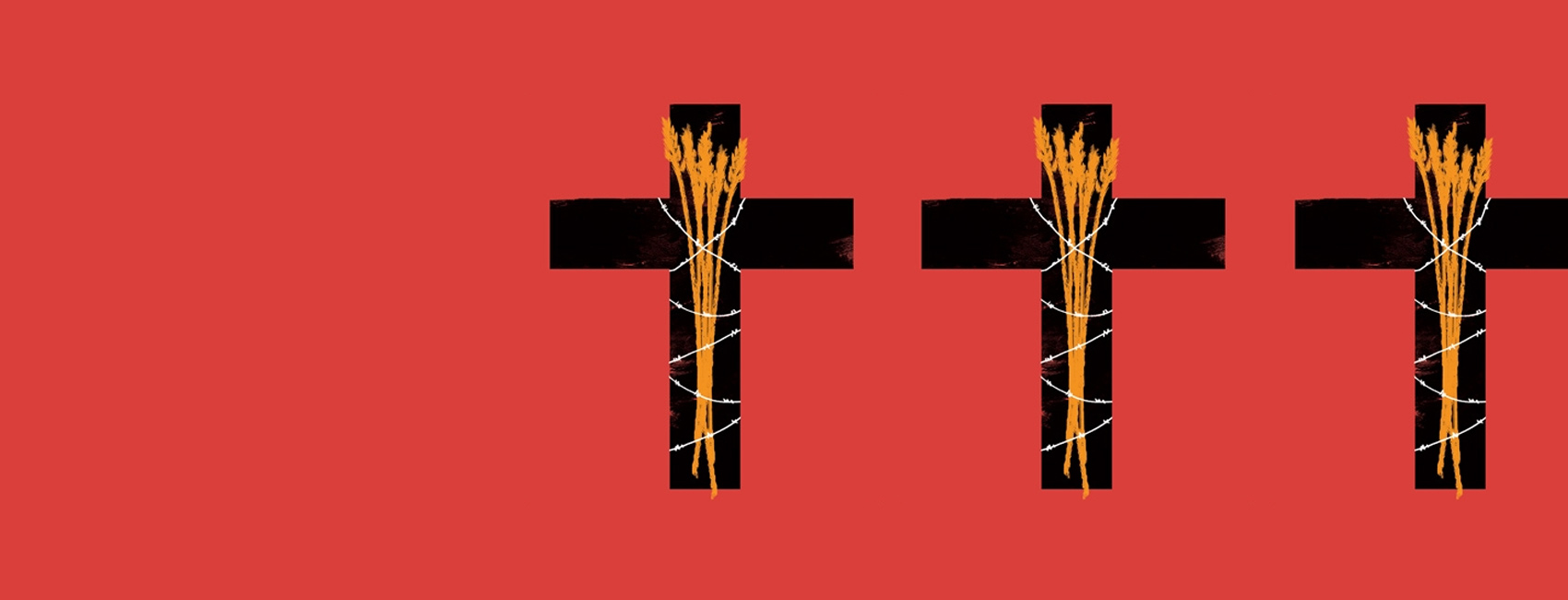* ESC - close the search window
Chytomo Picks
The complex, enduring human spirit in Valerian Pidmohylnyi’s ‘The City’
29.10.2024
Valerian Pidmohylnyi’s novel “The City” was recently added to the Harvard Library of Ukrainian Literature series. This novel, currently very popular in Ukraine, is being reissued by several publishers. It is scheduled for release in 2025.
This emotional, deeply psychological story written in 1927 is still relevant in many ways. Big cities lure thousands who seek a better, more interesting and fulfilling life. But these people from small towns have no guarantee their dreams will come true.
Nevertheless, Pidmohylnyi’s novel is linked to the time it was written and is important to the history of Ukrainian literature. In this review, we explain how past and present intertwine in the novel, and why knowledge of history makes the content of this book even deeper and more tragic.
The novel was completed in 1927 during the period of New Economic Policy. The Bolsheviks, who came to power after the overthrow of the monarchy in 1917, managed to overcome the devastation and ruin that had engulfed former parts of the Russian Empire including Ukraine. Now a socialist republic, the economy and society began feeling a sense of liberalization. The repressions of “war communism” receded.
Living standards for urban residents improved, although peasants still suffered from unjustly low prices for grain and other agricultural goods they grew or produced. Throughout the 1920s, the Ukrainian people, particularly in Kyiv and Kharkiv, experienced a cultural renaissance. Literature, visual arts, music, and theater experimented, debated, and — most importantly — looked to expand and develop Ukrainian culture.
This picture contradicts the portrayal of ruthless communists, doesn’t it? Truth is, all social and political processes were being carefully manufactured and controlled. Between 1920 and 1930, “Ukrainization” — a system of measures through which the Soviet Moscow metropolis sought to deepen its power in Ukraine by not banning the Ukrainian language or limiting the development of education and culture but rather promoting them — was ongoing. But once Ukrainian intellectuals began moving away from ideologically colored art and drawing closer to European cultural traditions, repressions began. This process became known in Ukrainian history as the “Executed Renaissance.”
Pidmohylnyi became one of those artists whose life was claimed by Stalin’s terror. Pidmohylnyi was arrested in 1934, tortured, and sent to a camp in Siberia without trial or investigation. It wasn’t until 1937 that his sentence was changed. Pidmohylnyi and a thousand other prisoners, including leading figures of Ukrainian culture, were executed in Sandarmokh, a distant place in Russia’s Karelia close to the Finnish border.
Revolution of the spirit
Literary historians call “The City” the first Ukrainian urban novel. Through the main character, Stepan Radchenko, Pidmohylnyi describes the transformations people actively involved in social and political processes were undergoing.
Stepan recalls that he took part in the fight for national liberation. This means that after the overthrow of the monarchy, he fought to establish Ukraine’s freedom as an independent state. The failure of Ukrainian politicians, the lack of support from European countries, and the superiority of the Bolsheviks in terms of ideology and weaponry led Stepan, like many people in reality, to support the Soviet government.
Coming from a village, the protagonist is a generalized image of a force that helped to overthrow the monarchy and fight against capitalism. Stepan’s character represents the archetypal basis for the purification of society. People from villages nourished the national culture, supplying it with new senses and meanings, thus strengthening the renaissance process.
In other words, Stepan embodies the revolution of the spirit: According to the plot, he arrived in Kyiv to get an education. He becomes one of those who will erase the old habits of the city while retaining his Ukrainian identity.

To conquer the city
Inspired by the desire to obtain an education and then return to his village and improve the lives of its people, Stepan quickly realizes that all his antipathy towards the metropolis has transformed into admiration. Pidmohylnyi skillfully depicts the complex emotions of the protagonist, who sometimes mourns and hates Kyiv. Stepan seeks solace in his love for a village girl named Nadia who has also come to the big city to study. (Why do we avoid calling Kyiv the capital? Because until 1934, Kharkiv was the capital of Soviet Ukraine.)
In his old clothes, Radchenko sees armor that protects him from the frivolity and vibrant superficiality of those who venture out every evening to enjoy life. One day, while admiring shop windows and inhaling the scent of perfume from a beautiful Kyiv woman, Stepan abruptly realizes his striking transformation.
He feels the overwhelming desire to have money, live in comfort, and obtain fame. On this new path, thoughts of his village will fade, and Stepan decides to sever ties with those who witnessed his past. As a result, he will hurt Nadia, who sincerely loves him. Believing he is conquering the city, Stepan will not notice how Kyiv has conquered him, changing his personality beyond recognition.
Human versus writer
The confrontation between the village and the city runs out of steam. Stepan is a talented student, but he gives up his studies because of his inner torment, exhausting dreams, and love affairs. Most importantly, his desire to become a writer leaves no room for listening to lectures and taking exams.
It is worth noting how subtly Pidmohylnyi draws the portrait of his novel’s protagonist. The reader is captivated by the contemplation of changes that occur to Stepan. On the one hand, it is hard not to sympathize when Stepan is alone with no money and must find ways to keep from starving. It is easy to admire Stepan’s perseverance and determination, which sometimes resemble naivety when he takes his first literary steps.
However, if you take a closer look and forget about empathy, you will notice that Pidmohylnyi has created a rather selfish, narcissistic personality. For example, Stepan suffers from loneliness. What will he do to deal with it? He will have an affair with a married woman and then be ashamed of her. He will start a relationship with an emancipated woman who will truly love him, only to break her heart and lead her to suicide…
In the second part of the novel, a new, stronger conflict arises in Stepan’s soul between writer and man. Yes, “The City” separated these hypostases. A writer is capable of doing anything to gain fame and money, while a human is not for sale, retaining the ability to see the feelings and needs of others.
In the end, Stepan becomes a city dweller. He forgives himself for the mistakes he made and finds new love in the city. At last, he surrenders fully to it.
“The City” is a psychological novel about the shaping of a personality. It is a portrait of an era, but, at the same time, it is a story familiar to those who live in the twenty-first century, dreaming of the lights of London, New York, or Tokyo, currently dwelling in Blaston, Kirk, or Miyada.
Pidmohylnyi’s novel also speaks to the freedom of choice. You decide who to be, what to do, and whom to love. Although the text ends with a positive and uplifting spirit, it is hard to get rid of the idea that Stepan’s future achievements, similar to the life and work of his creator, would have endured eternal hardship.
“The City” was published in 1928 and immediately became a prominent phenomenon of literary life. Let’s not forget that the book was banned during the Soviet repressions of the 1930s. It became available to readers again when the “evil empire” ceased to exist after 1991. So, when you pick up this novel, remember that it tells the story of the struggle that Ukrainians continue to this day: the struggle for their language, literature, and ultimately for life, beautiful and peaceful, like the streets of Kyiv Stepan saw many long years ago.
RELATED: ‘The Language of War’ by Oleksandr Mykhed: But lead us not into the temptation of forgiveness
The publication is a part of the “Chytomo Picks: Classics and New Books from Ukraine” project. The materials have been prepared with the assistance of the Ukrainian Book Institute at the expense of the state budget. The author’s opinion may not coincide with the official position of the Ukrainian Book Institute.
Team of authors: Anastasiia Herasymova, Evheniia Sapozhnikova
Translation: Iryna Savyuk
Copy editing: Terra Friedman King
This publication is sponsored by the Chytomo’s Patreon community





